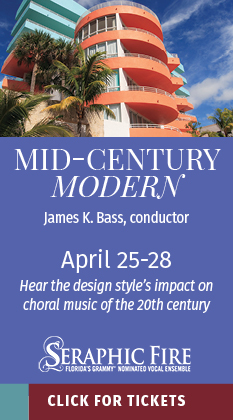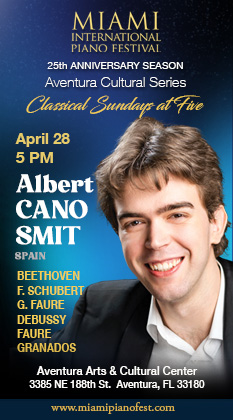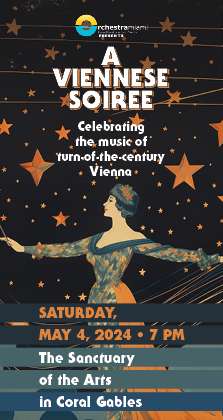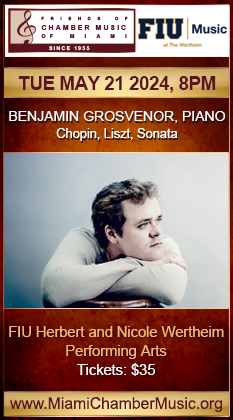The Ehnes Quartet explores the otherworldly audacity of late Beethoven
The annual combination of the Ehnes Quartet and the chamber works of Beethoven has become one of the most eagerly anticipated events each season for Miami’s Friends of Chamber Music.
Even by this group’s high standard, their reading of Beethoven’s Quartet No. 14 in C-sharp minor, Op. 131, on Thursday night at Gusman Hall in Coral Gables was something special. On rare occasions a performance of a familiar masterpiece can make the score sound totally new and audacious, feeling as if the listener was hearing the music for the first time. The Ehnes Quartet’s performance managed to accomplish that feat.
When the near-totally-deaf Beethoven wrote his final quartets, he was no longer creating music for the populist tastes of his Viennese audience or for his performing colleagues. These final chamber works are strikingly original and conceived on a different sphere. Almost two centuries after its creation, this music sounds remarkably modern. The Quartet No. 14 is Beethoven’s penultimate essay in this genre and one of his most profound scores. In seven connected movements of around forty minutes, Beethoven probes the summit and depths of human emotion.
Violinist James Ehnes and colleagues dug in deep with their bows as Beethoven’s otherworldly opening pages unfolded. They brought out both the serenity and aura of tragedy that pervades the initial Adagio. The players’ rounded sonority and expressive force underlined the urgent rhythm of the Allegro molto vivace, with their strong dynamic contrasts adding a potent edge.
The exquisite violin duo of Ehnes and Amy Schwartz Moretti conveyed the aristocratic character of the Andante, which recalls the Beethoven of an earlier time. Violist Richard O’Neill and cellist Edward Arron’s darker sound blended felicitously, with O’Neill’s rapid dexterity especially impressive.
Many groups play the Presto section in a light, smooth manner. The Ehnes players instead brought an edgy tension to this interlude, taking the music at a rapid pace. The performance reached its zenith in a spacious and compelling traversal of the Adagio. The sadness and inner torment of the music were potently explored in a wide range of instrumental colors.
The concluding Allegro was a wild ride with sudden pauses and dissonances. Brusque and hard driven, the intensity of the group’s abrupt final chords seemed to leave the audience stunned—a tribute to Beethoven’s pathbreaking vision. A prolonged ovation followed this outstanding performance.
The generous program’s first half was devoted to Beethoven’s lighter side with two of his early works. The Quartet No. 2 in G Major (Op. 18) is one of his most sunny, Haydenesque scores. Astutely encompassing the wit of the third movement Scherzo, the dancelike themes were given shapely bounce and verve. This quartet’s final movement is one of Beethoven’s liveliest creations and the group’s spirited performance went with great élan. In brilliant violin solos, Ehnes had the opportunity to display his virtuoso chops on his 1715 Stradivarius.
Beethoven’s String Quintet in C Major, Op. 29 is rarely played because it requires two violas. The quartet was joined by Roberto Díaz. Long an outstanding violist and educator, Díaz this week received two Grammy Awards – for best contemporary composition (Jennifer Higdon’s Viola Concerto), and best compendium album. (Díaz played Higdon’s fine concerto with Robert Spano and the Curtis Chamber Orchestra at a Friends of Chamber Music concert in 2015.)
While the quintet is not top-drawer Beethoven, it contains suggestions of the composer’s future journey. Stormy and tense moments flow alongside charming melodic writing. The score’s two inner movements are its strong point. Ehnes’s burnished sonority was at its best in the serenade-like Adagio and the vivacious Scherzo was given a touch of rustic momentum and playfulness.
Díaz, who plays the instrument that once belonged to legendary violist William Primrose, blended beautifully into the ensemble. His tone splendidly blended with that of O’Neill, the two often sounding as one. While the Presto finale tends to ramble somewhat, the Ehnes players and Díaz maintained tension and precisely balanced ensemble through to the final bars. The entire program offered Beethoven playing of the highest order.
Friends of Chamber Music’s season continues with a recital by pianist Joseph Kalichstein featuring works by Beethoven and Schumann 8 p.m. February 20 at Coral Gables Congregational Church. miamichambermusic.org
Posted in Performances
Leave a Comment
Fri Feb 2, 2018
at 12:18 pm
No Comments







